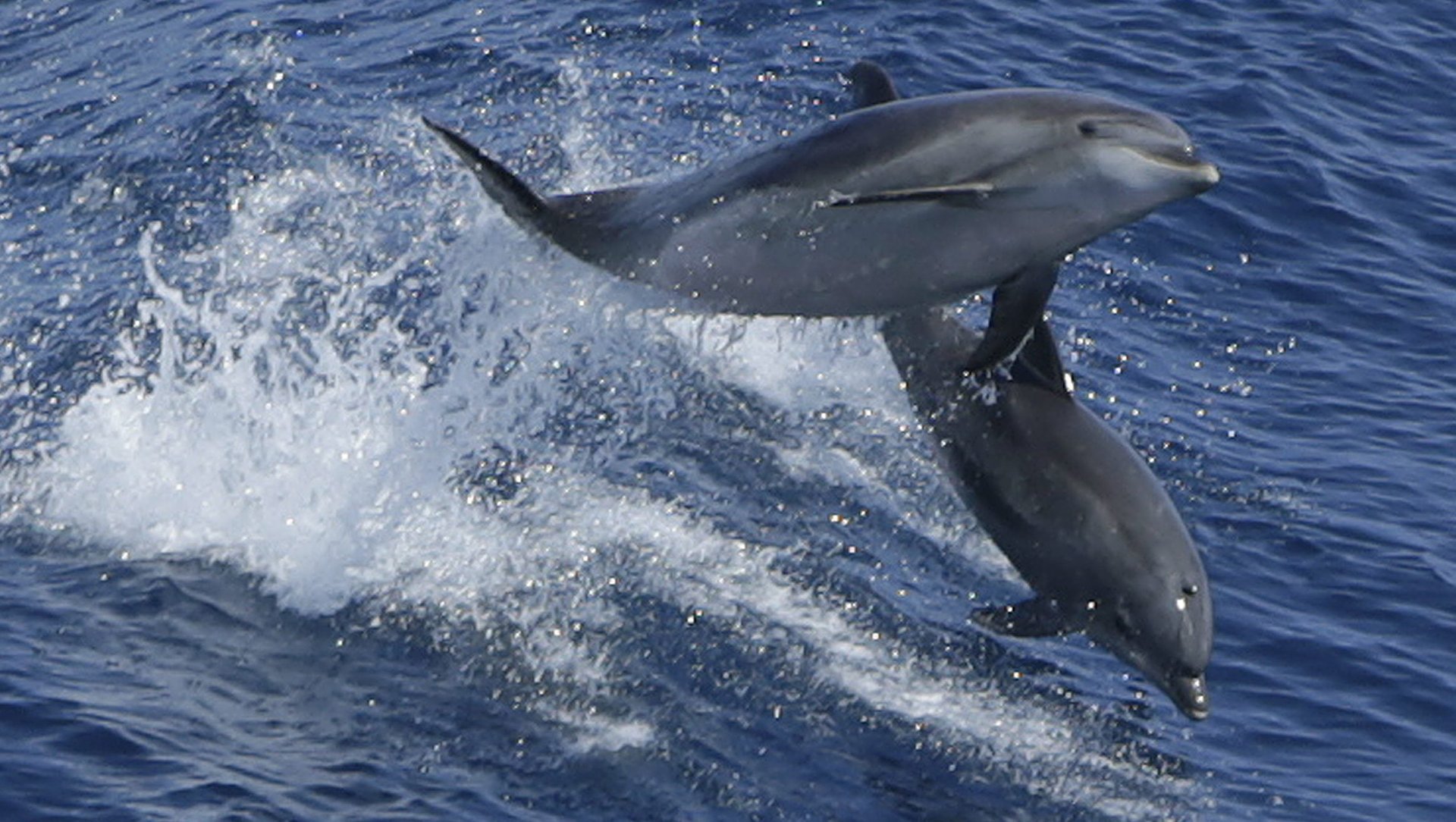A new law will try to save whales and dolphins by wielding America’s seafood purchasing power
The US, having successfully saved the whales, is now requiring other countries do the same.


The US, having successfully saved the whales, is now requiring other countries do the same.
According to a study published today in Science by the team of scientists at the nonprofit Oceans Initiative, a new rule going into effect on Jan. 1, 2016 could provide significant international protection to many species of marine mammals. The rule, which advocates have for years been calling for, will ban the import of fish from fisheries that cannot prove they meet US standards for protecting marine mammals.
The rallying cry, “Save the Whales!” may seem a little outdated. And in US waters, it is. The US Marine Mammal Protection Act of 1972 (MMPA) made it illegal—with certain exceptions—to “take” a whale, dolphin, porpoise, seal, sea lion, manatee, dugong, sea otter, or polar bear in US waters, or elsewhere by a US citizen without a permit. That term “take” is expansive, including capturing, injuring, or even just harassing a marine mammal. (Don’t pet the seals! Hunting them if you’re an indigenous Alaska native is OK.)
In response, US fishermen were forced to modify their fishing gear so that it didn’t so easily entangle dolphins, whales, and seals. They also started avoiding marine mammal hot spots. And it worked. In September of this year, nine out of 14 genetically distinct humpback whale populations were delisted from the US List of Endangered and Threatened Wildlife. The gray seal population off of Cape Cod has rebounded so much that fishermen and residents of the Cape have begun to grumble about the “seal problem.” The mortality rate of the Eastern Tropical Pacific dolphin has plunged 99% since the MMPA went into effect.
But fishing practices dangerous to whales and other marine mammals continue outside of US waters. The National Resources Defense Council estimated in 2014 that 650,000 marine mammals were killed or hurt by foreign commercial fishing each year, usually because they are caught unintentionally in commercial fishing gear—as what’s called “bycatch” in the industry.
And with many fisheries going completely unmonitored, it’s hard to know how many marine mammals exactly are getting “taken” and how their population is faring. Only about 5% of the world’s oceans are surveyed in enough detail to know whether marine mammal species are trending up or down in numbers.
As a US consumer, it’s almost impossible to know whether the shrimp you’re buying at the grocery store contributed to the death of a whale. Just try asking at a restaurant where and how your tuna was caught—you’ll likely get a stammered and vague answer.
Nearly all of this imported seafood already violates the MMPA, which technically requires that countries prove the fish they export to the US was not caught in a way that violates US standards. The problem, so far, has been enforcement.
It’s not just Japan’s maligned fleets that threaten much-loved dolphins and whales. Canada’s lobster and crabbing practices put the North Atlantic right whale at risk. The New Zealand sea lion is in danger because of the country’s squid-fishing industry. And Italy and Turkey’s lack of enforcement of a driftnet ban threatens the Mediterranean sperm whale. There are many other examples. What’s more, because foreign fisheries can essentially cheat at this game, they can undermine responsible members of the US fishing industry in terms of price and quantity.
The new rule closes this loophole in three steps: It requires countries to research and monitor their fisheries, implement scientifically-based measures to reduce the “take” of marine mammals, and then present proof to the US for consideration. The US can then ban imports from any fishery that hasn’t proved compliance.
“Many countries have legislation that waits until species are at imminent risk of extinction before intervening,” says Erin Ashe, a conservation scientist with Oceans Initiative and a co-author on the study. “This will allow us to shift from crisis management to crisis avoidance, by identifying and reducing bycatch problems long before they become irreversible.”
Will the new law work? Maybe. As the world’s largest importer of seafood, the US has serious clout, and if countries get to work on complying with the requirements, then it could mark a turning point for some severely threatened species. But it’s up to the US to decide how strictly it wants to compare foreign fisheries management to our own standards. Too strict, and it could hurt developing countries (especially island nations and small Latin American countries) who may not have the resources to enforce or monitor its fishing fleets, the study says, unless other countries step up to provide funds and support and share their resources and data. If the interpretation is too loose, “then the rule will be meaningless and have no real-world conservation benefit,” says Oceans Initiative marine conservation biologist and study co-author Rob Williams.
This new rule also doesn’t address other serious threats, such as depleted food resources, new diseases, and the physical danger and noise from the shipping industry. But it’s a cheering thought to know that in five years time, US consumers might be able to eat their shrimp cocktail with confidence that no whales were harmed in the process.
“With globalization, we are often talking about races to the bottom,” says Matthew Burgess, a sustainable fisheries researcher from UC Santa Barbara. “This could be a rare example of a race to the top.”